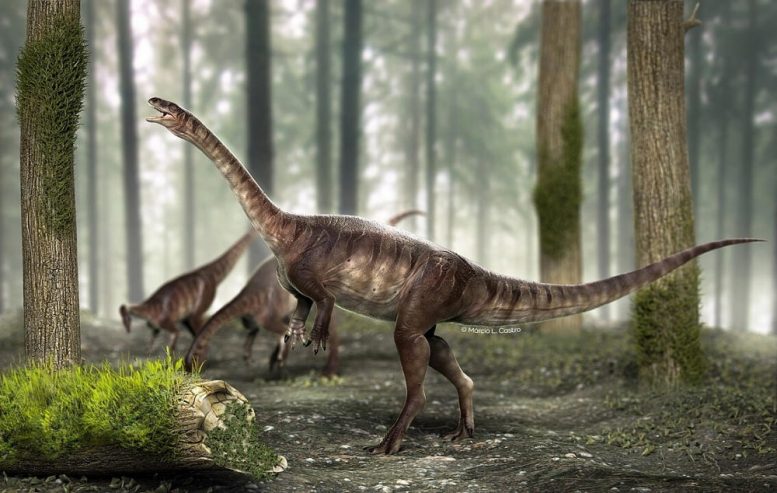
Bone cavities, known as air sacs, emerged in precursors of long-necked dinosaurs roughly 225 million years ago, as evidenced by a specimen unearthed in Rio Grande do Sul, South Brazil. The research also indicates that air sacs did not evolve as linearly as scientists believe. Credit: Márcio L. Castro
Bone cavities called air sacs emerged in the precursors of long-necked dinosaurs around 225 million years ago, according to the analysis of a specimen found in Rio Grande do Sul state, South Brazil.
The missing link has just been found, bridging the gap between the earliest dinosaurs, which varied significantly in size from mere centimeters to a maximum of 3 meters, and more recent giants that could be more than twice the length of a bus and have so much appeal to the popular imagination.
Macrocollum itaquii, which was discovered in the region of Agudo in the Rio Grande do Sul state of South Brazil and dates back 225 million years, is the most ancient dinosaur known to have structures referred to as air sacs.
These bone cavities, which persist in present-day birds, enabled dinosaurs to capture more oxygen, keep their bodies cool, and withstand the harsh conditions of their era. They also helped some become giants: Tyrannosaurus rex and Brachiosaurus, for example.
An article on the study that led to the discovery was published in the journal Anatomical Record. Two of its authors are researchers supported by FAPESP at the State University of Campinas (UNICAMP) in São Paulo state.
“Air sacs made their bones less dense, allowing them to grow to more than 30 meters in length,” said Tito Aureliano, first author of the article. The study was conducted as part of his PhD research at the Institute of Geosciences (IG-UNICAMP).
“M. itaquii was the largest dinosaur of its time, with a length of about 3 meters. A few million years before then, the largest dinosaurs were about 1 meter long. Air sacs certainly facilitated this increase in size,” Aureliano added.
The study was a stage of the project “Taphonomic landscapes,” funded by FAPESP. Taphonomy is the study of how organisms decay and become fossilized or preserved in the paleontological record.
The principal investigator for this project was Fresia Ricardi-Branco, the penultimate author of the article and a professor at IG-UNICAMP.
“This was one of the first dinosaurs to walk the Earth, in the Triassic period,” she said. “The air sac adaptation enabled it to grow and withstand the climate in this period and later, in the Jurassic and Cretaceous. Air sacs gave dinosaurs an evolutionary advantage over other groups, such as mammals, and they were able to diversify faster.”
In a previous study, the group showed that the earliest fossils found so far did not have air sacs, taking their absence as a sign that this trait evolved at least three times independently.
M. itaquii was a biped, a sauropodomorph, and an ancestor of the giant quadrupeds with a small head, and a neck at least as long as the trunk.
Nonlinear evolution
Until air sacs were discovered in M. itaquii, these vertebral cavities were known to consist of either camerate or camellate tissue, the former referring to hollow spaces observed by microtomography, and the latter to spongy bone. According to the authors, in this case, they found “internal pneumatic chambers”, which are “neither camerate nor camellate, but a new type of tissue with an intermediate texture”. They propose to call the new structures “protocamerate”, as they “are not large enough to be considered camerae, but also present a camellate array internally”.
“The most widely held hypothesis until now was that the air sacs began as camerae and evolved into camellae. Our proposal, based on what we observed in this specimen, is that this other form existed first of all,” Aureliano said.
The vertebrae in which the air sacs were found also changed what was known about the evolution of these structures. Based on the fossils analyzed previously, other research groups proposed that air sacs first appeared in the abdominal region and did not appear in the cervical region until the early Jurassic (190 million years ago), a long time after the period in which M. itaquii was alive. Here, however, the authors found clear evidence of air sacs in the cervical and dorsal regions, with no sign of the structures in the abdominal region.
“It’s as if evolution had conducted different experiments until it arrived at the definitive system, in which air sacs run from the cervical region to the tail. It wasn’t a linear process,” Aureliano said.
Reference: “The origin of an invasive air sac system in sauropodomorph dinosaurs” by Tito Aureliano, Aline M. Ghilardi, Rodrigo T. Müller, Leonardo Kerber, Marcelo A. Fernandes, Fresia Ricardi-Branco and Mathew J. Wedel, 27 March 2023, The Anatomical Record.
DOI: 10.1002/ar.25209
The study was funded by the São Paulo Research Foundation.

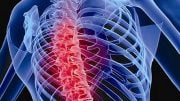
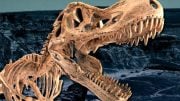
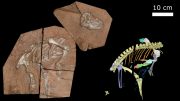
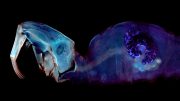
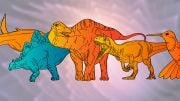

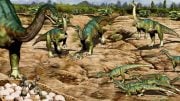
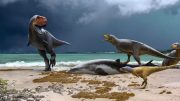
Interesting story to capture more oxygen that sound like modern crocodilian because dinosaur and gator are the same animal .hollow bone beyond the skull they cliam only birds dinosaur has that but it is found in other animal like the gator and all modern crocodilian a eusuchian feature but it is not pneumatic this is feature of bird dinosaur a hole in the bone the evidence for pneumatic fenestra-fossa in modern crocodilian probaly there it’s cover up by badit scientist the fossil mesoeucrocodylia probaly has it.the interesting story the hollow bone in mesoeucrocodylia started in eusuchian were the fast vertebrae joint was invented the none eusuchian mesoeucrocodylia macelognathus have extreme hollow bone on legs it’s a fast animal like birds and horse the tibia is bigger than the femur clearly this mesoeucrocodylia is fast .
I Suspect mesoeucrocodylia has pneumatic fenestra when I found out about macelognathus hollow bone leg and that modern crocodilian has hollow bone beyond the skull this was not hype up I think same thing for modern crocodilian pneumatic vertebrae or leg or any were beyond the skull.this how modern crocodilian cool down by the hollow bone I wonder how they do that since they are very fast with those monster vertebrae joint and cat has simular system gator was allways high end animal .why modern crocodilian need so much oxygen and it’s a reptile it’s feature better than mammal like kidney flow through lungs
They say mobile pubis hip of modern crocodilian is to get more oxygen allso found in advance bird hip dinosaur .spinosauridae is the ancestor of modern crocodilian they have pneumatic fenestra in baryonyx but not spinosaurus so it’s good chance it’s in other mesoeucrocodylia so its deevolution spinosaurus and the gator .they were large dinosaur in early dinosaur I read sphenosuchus was very big in the days this is pseudosuchus dinosaur. supercroc is not eusuchian mesoeucrocodylia it was size of spinosaurus no hollow bone it’s early mesoeucrocodylia they were fossil caiman the size of spinosaurus but caiman is most advance dinosaur ever the 3 toe claw tetanuran dinosaur these dinosaur have more hollow bone than the early eusuchian the 4 toe claw mesoeucrocodylia
Clearly these are not air sac what are they.dinosaur is scientific impossible to have bird air sac system very moveable femur the body is divide into two and other things .monitor lizard has air sac in the mouth monitor are high end reptile they allso are divide in 2 body this is rare for reptile.this is true air sac that help them breathe many animal have air sac in the skull.clearly this is convergent evolution crocodilian trend to do this a lot they are so fast and simular to mammals that why they are greatest dinosaur ever and are very much alive and are very successful animal today.modern crocodilian technology is high end and can not be change you can not spin it that why it’s the king of dinosaur when education is use.
Always searching and never finding…